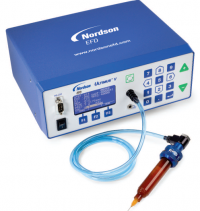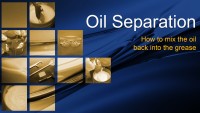Nye Lubeletter - July 2015
 Dispensing Industrial Lubricants:
Dispensing Industrial Lubricants:
Guidelines From a Career Dispensing Technology Enthusiast

Dispensing lubricants is typically an easy task, as compared to the dispensing of other materials with a short “pot life” (such as thermosetting epoxy), but there are still many pitfalls to avoid. Most of the time, the amount of lubricant is not very critical, nor is the method of dispensing. How technicians apply the lubricant depends largely on the product design itself, such as whether the application being lubricated is a bearing or bushing, or electronics module, or medical device. It is important for a technician to consider how to do it “best” - most economically, most efficiently, etc. - considering the details of the product. This article, written by Robert Hoffman, Nye’s Western Region Engineering Manager, is an overview that covers many of the important features to consider when dispensing lubricants.
 Nye Launches its First “How To” Video
Nye Launches its First “How To” Video
The marketing team at Nye recently completed its first educational video for the new NyeTube channel. The video was created to demonstrate how you can mix separated oil back into the grease. When you open our grease pails you might see a thin layer of oil at the top of the grease and be concerned. Some oil separation commonly occurs in lubricants and is not a problem. The video gives instructions to guide you in easily mixing the separated oil back into the grease.
The new NyeTube channel will feature instructional and educational videos to help answer your frequently asked questions. Several of our departments will work together to produce future videos that keep you informed about our products and company.
 Lubricants as a Key Design Component
Lubricants as a Key Design Component
Ideally, lubricants should be selected and specified in conjunction with other design materials. In practice, however, lubricants are often added at the end of the design cycle. The result can be unexpected material incompatibility and premature failure. Taking time upfront to specify a lubricant and ensure its compatibility with other materials pays off in the long run.
 Lubricating Exhaust Fan Bearing in FGD Systems
Lubricating Exhaust Fan Bearing in FGD Systems
Since the Clean Air Act (CAA) in 1970, U.S. power utilities have made significant progress installing pollution control equipment to curb power plant stack emissions. The CAA Amendments of 1990 heightened the urgency of installing a large number of Flue Gas Desulfurization (FGD) systems, or scrubbers, in a relative short period of time. As of 2005 with the passage of the Clean Air Interstate Rule (CAIR) along with plans for building new coal-fired stations, a steady number of new scrubbers have been planned for construction through 2030.
Nye Lubricants developed a high temperature and chemically inert oil, Uniflor™ 8190, for use in lubricating the blade pitch bearings of axial flow exhaust fan designs used in the FGD scrubbers installed at coal fired power plants.


